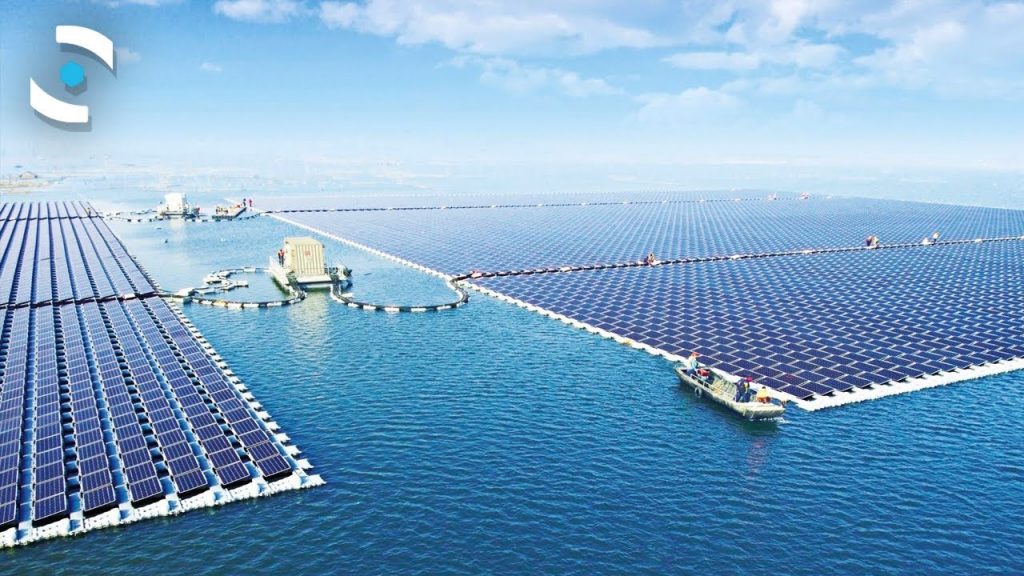Buffeted by waves as high as 10 meters (32 feet) in China’s Yellow Sea about 30 kilometers off the coast of Shandong province, two circular rafts carrying neat rows of solar panels began generating electricity late last year, a crucial step toward a new breakthrough for clean energy.
The experiment by State Power Investment Corp., China’s biggest renewable power developer, and Norway-based developer Ocean Sun AS is one of the most high-profile tests yet of offshore solar technology. It’s a potential advance in the sector that would enable locations out at sea to host renewables, and help land-constrained regions accelerate a transition away from fossil fuels.
Most initial trials of solar-at-sea have involved small-scale systems, and there are numerous challenges still to overcome — including higher costs and the impacts of corrosive salts or destructive winds. Yet developers are increasingly confident that offshore solar can become a significant new segment in renewable energy.
“The application of this is virtually unlimited,” because many regions have constraints on the use of land, including parts of Europe, Africa and Asia along with locations like Singapore and Hong Kong, said Ocean Sun’s Chief Executive Officer Børge Bjørneklett. “In these places, you see there’s a huge interest for this technology.”
Shandong, the industrial hub south of Beijing, plans to add more than 11 gigawatts of solar offshore by 2025, and to ultimately build 42 gigawatts, more than the current power generation capacity of Norway. Neighboring Jiangsu has a target to add 12.7 gigawatts, while provinces like Fujian and Tianjin are also studying proposals. Japan, the Netherlands and Malaysia are among other nations conducting or preparing test projects.
Even with investments in solar forecast to surpass spending on oil production for the first time this year, many regions face challenges in finding land to install vast arrays of panels, either because of a lack of available space, as a result of inhospitable terrain, or because to do so would require deforestation.
That’s spurring the push to examine new, and sometimes unlikely, sites for solar that’s already seen hundreds of floating projects delivered on lakes, reservoirs, fish farms and dams. Japan has dozens of smaller arrays, China and India have added major operations, and facilities have been built in nations including Colombia, Israel and Ghana. In January, the largest floating solar project in the US was brought fully online, supplying enough power for 1,400 homes from panels at the Canoe Brook water treatment plant in New Jersey.
Tags: Fossil Fuel, offshore Solar, Renewable Energy



Recent Posts
South Africa advances plans to decarbonize shipping sector
New IMO Course Builds Global Capacity for Safe Use of Renewable Fuels in Shipping
IISc Develops Hydrogen Production Tech from Agri-Waste with Over 99% Purity
MPCC Orders Four Energy-Efficient Container Vessels in USD 228 Million Fleet Expansion
Yang Ming Orders LNG Dual-Fuel Vessels from Hanwha Ocean Advancing its Fleet Optimization Plan
Shipping Industry Seeks Clarity Ahead of IMO’s Net-Zero Framework Adoption
Report Highlights Pathway for Electrifying Nigeria’s Container Trade Sector
South Korean Company YPP Plans to Invest up to $3.1 Billion in Green Hydrogen Production in Kazakhstan